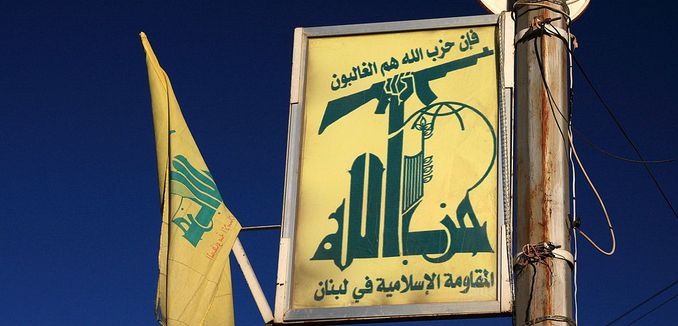Hezbollah has embedded its rocket arsenal in villages across Lebanon, ensuring that any Israeli strike on the Iran-backed terrorist group’s military assets will lead to mass civilian casualties, a former Treasury official said on Monday.
Hezbollah has “turned the Shiite villages … into essentially missile silos,” Jonathan Schanzer, now the vice president for research at the Foundation for Defense of Democracies (FDD), said while speaking on a panel hosted by FDD on the possibility of a future conflict between Hezbollah and Israel.
“This is going to be a huge problem for the Israelis. We have heard it from Israeli leadership. What they said is that all of Lebanon is now south Lebanon,” he added. South Lebanon has traditionally been a stronghold for Hezbollah, where much of the fighting between the terrorist group and Israel took place in previous conflicts.
“What you have is rockets placed under homes, schools, apartment buildings, etc., so when the Israelis need to try to strike these weapons before they’re launched, it will potentially lead to mass casualties,” Schanzer continued. This is when international pressure on Israel to mitigate its military actions generally intensifies, he observed. “Essentially Hezbollah has put Israel in a no-win situation. If they want to win this war, if they want to try to knock out these weapons, it will inevitably bring that backlash.”
Former IDF general Yakov Shaharabani, Schanzer’s co-panelist and a senior advisor at FDD, added that “there are more than 200 Shiite villages that Hezbollah is rooted [in] all over Lebanon.”
If Israel seeks to defeat rather than deter Hezbollah in a future war—a likely possibility, according to Shaharabani—then the result “might be very destructive,” he observed.
A report for FDD written by Schanzer, Tony Badran, and David Daoud explained that Hezbollah deliberately embeds its military infrastructure in civilian areas in order to limit “the IDF’s ability to respond for fear of collateral damage.”
The genesis of this approach could be first observed after the 2006 war, when Hezbollah embarked on a project to rebuild homes for needy Shiite families, with the caveat that at least one rocket launcher and several rockets would be housed there, and would be fired at Israel when the order was given. Hezbollah has also set up camouflaged defense positions in villages, containing Russian-, Iranian-, Chinese-, or even North Korean-made anti-tank missiles, while planting large explosive devices along access roads and converting large village structures into arms caches. In this manner, the organization converted some 180 Shiite villages and towns between the Zahrani River and the Blue Line into fighting zones – both above and below ground.
The report noted that “Israel will have a stronger justification to strike” Hezbollah targets in civilians areas, but that “IDF leadership fully understands that Hezbollah will look to exploit images of Lebanese civilian casualties in order to move the United States and Europe to pressure Israel into a premature ceasefire. This is exactly what Hezbollah did in 1996 and again in 2006. It is also not hard to envision Iran threatening to pull out of the [nuclear deal] for the same purpose.”
Schanzer said during the panel that most analysts of the region believe that any such conflict will most likely erupt through the “snowball effect”—one incident precipitating a gradual escalation that would lead to an all-out war. “But there is concern that with Iran on a path potentially to a nuclear weapon 10-15 years from now, that the Israelis see a window closing,” Schanzer observed. (Most restrictions placed on Iran’s nuclear program by the nuclear deal are set to begin expiring after the tenth year of the accord.)
“They’ve talked about something called a nuclear umbrella, this concern that it will be much more difficult to counter Hezbollah if and when Iran has a nuclear weapon,” Schanzer added. “In short, we’re not seeing anything that’s mitigating Hezbollah’s strength. We see them growing stronger as a result of the nuclear deal and as a result of their natural growth, and so we’re raising this [issue] now in the hopes that perhaps we can try to avert what could be a very nasty conflict.”
An Israeli defense official told The New York Times last May that the buildup of Hezbollah’s terror infrastructure in southern Lebanese villages meant that “civilians are living in a military compound….We will hit Hezbollah hard, while making every effort to limit civilian casualties as much as we can…[but] we do not intend to stand by helplessly in the face of rocket attacks.” A few days later, a newspaper linked to Hezbollah confirmed the Israeli assessment.
United Nations Security Council Resolution 1701, which was passed unanimously to end the 2006 war between Israel and Hezbollah, forbids the transfer of weaponry to Hezbollah. However, Iran has continued to arm Hezbollah, and the Security Council has refused to act to enforce the resolution.
[Photo: Flickr ]




